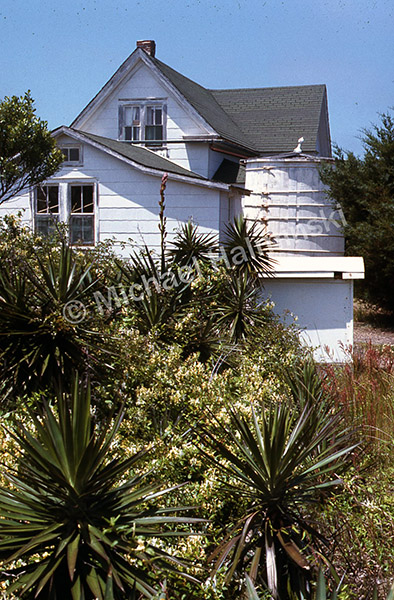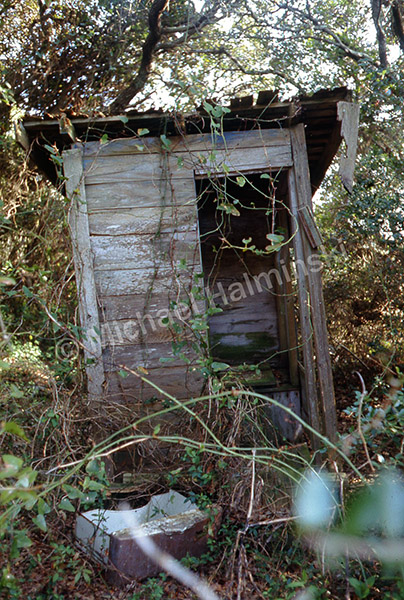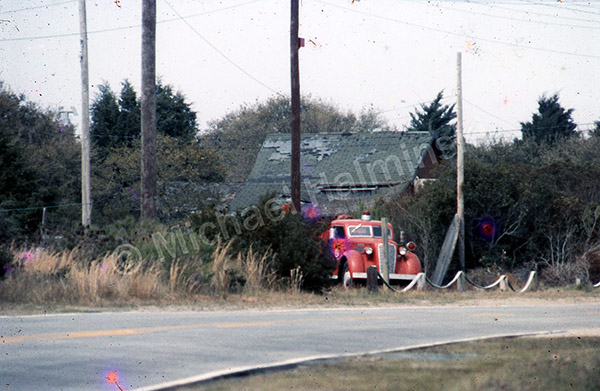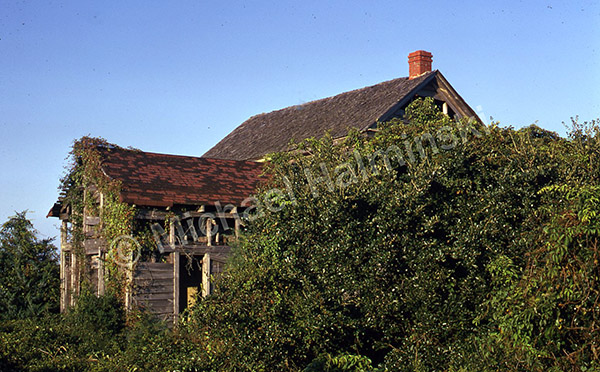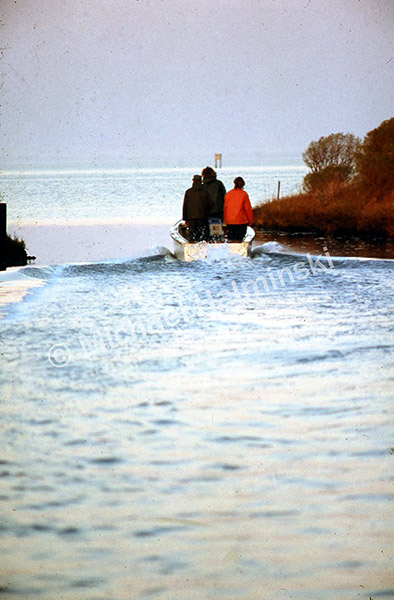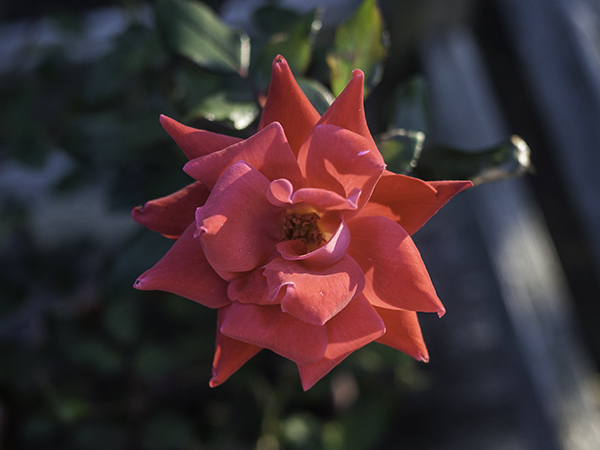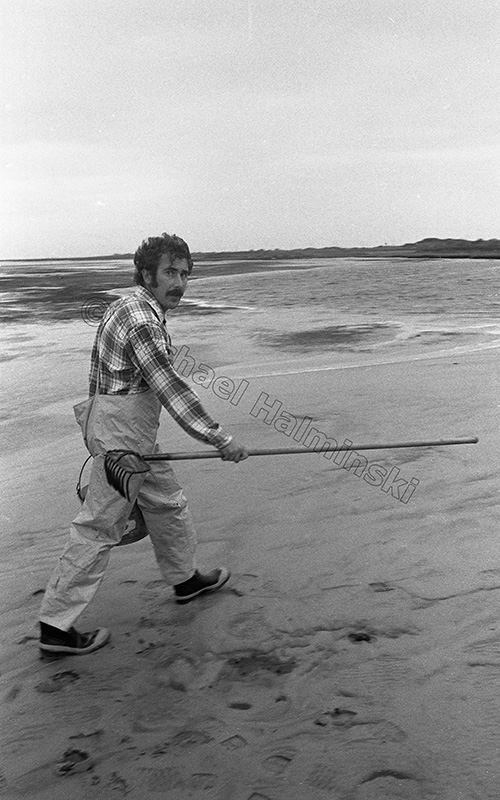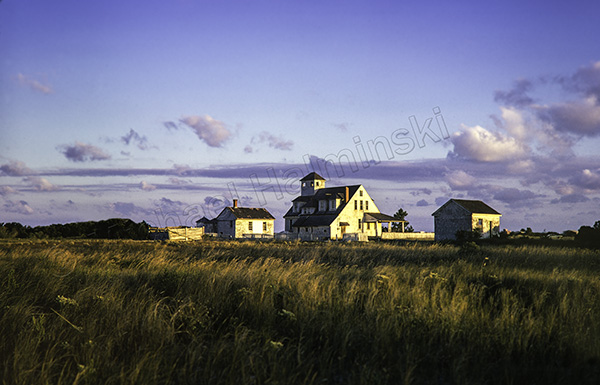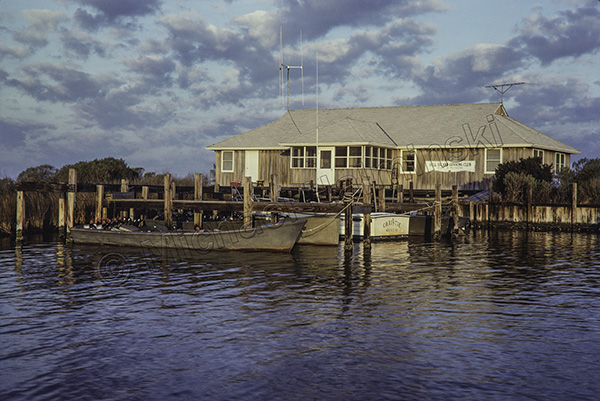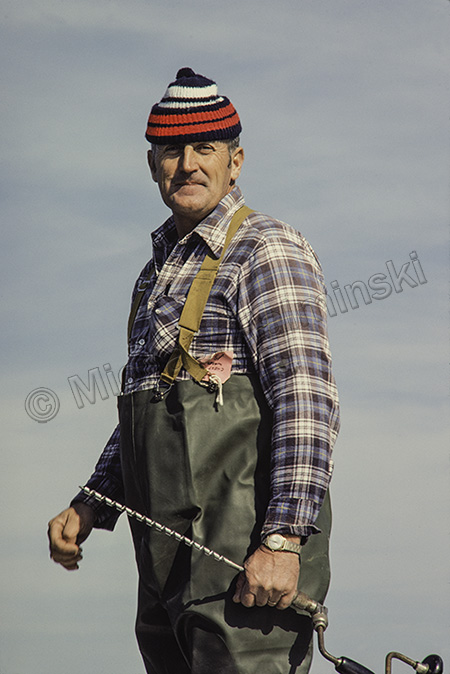Looking back, some of my most endearing photographs were portrait shots of locals. If I had it to do all over again, I would concentrate on environmental portraiture more than I did. I guess it’s fortunate that I captured anything at all. Life is full of regrets. Most of the time we have only one chance at something, then the opportunity is gone forever.
One of my favorite portraits was taken in 1980 as I accompanied my fishing friends setting up a pound net. It’s a labor intensive process, cutting the stakes from a forest, transporting them out to the Pamlico Sound and jetting them firmly into the bottom. The wooden stakes are the framework to support the net system. The pound net is an old, yet efficient method of catching fish. Fish follow a line of net that leads into a rectangular pound where they are trapped alive, until they are bailed out by the fishermen.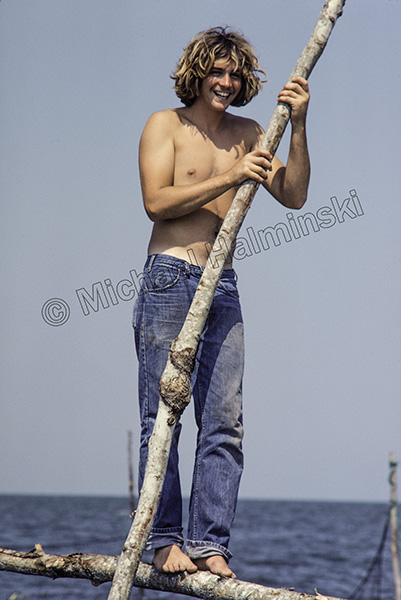
Selby Gaskins Jr. was a young man then and willing to pitch in to help. Mischievous at times, he always seemed to have a good time and not cause much trouble to anyone. In this shot he was taking a break after applying his weight to force the pole down as it was pumped into the bottom. He was obviously enjoying himself as I took some pictures. For me this photograph typifies the carefree lifestyle when I moved here, no shoes, no shirt, no problem.
Later in life Selby was stricken with MS, and over the years has slowly lost much of his physical capabilities. It’s been heartbreaking to see this happen to a friend. He’s spent years restricted to a motorized wheelchair, yet used it to get to the post office or go to a friend’s house. The community has come together to help in a number of fundraising events. Much to his appreciation, some of us have brought him fish and oysters. I’ve always been amazed at his courage living with this relentless, debilitating disease. His life is a tough one.


